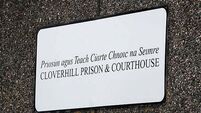GPA fire warning shots as battle looms with Croker authorities over expenditure issues

It was never really about the report. Nowhere in GAA director-general Tom Ryan’s annual offering was there a criticism of the Gaelic Players Association (GPA). Nowhere in those 60 pages was there a mention or a scintilla of evidence that the GAA consider the inter-county players’ body ‘a problem child’.
The suggestion that the GPA had put forward a strawman argument with their statement Wednesday evening was only strengthened by their condemnation of Ryan’s warning about unsustainable expenditure on inter-county teams. “It is disappointing to see that it is the so-called unsustainable costs of those inter-county games commanding such a share of the GAA’s attention,” noted GPA CEO Paul Flynn.
Defending the rising costs of preparing teams, a total figure which is almost sure to pass the €30 million mark this year, was a brash at best, foolish at worst move by the GPA. As the inter-county season contracts in length and the GAA’s entire gate receipts (minus last year’s All-Ireland replay) just about cover what was spent by counties on their representative sides, the expenditure can’t be condoned.
It should be noted, though, that of the close to €30m figure €2.6m of it was given to players in indirect funding (increased mileage rate and nutritional allowances), a rise from €2.4m in 2018. Separate to that, direct funding to the GPA was €3.3m, down €0.2m from 2018.
Until GAA and GPA have yet to come to a new agreement, those numbers will remain roughly the same this year. Would the GPA have reacted in such a way had a deal been struck already? Hardly. Flynn’s message was one for his fellow current and former inter-county players than anyone else: we’re batting hard for you.
The irony is that Flynn and Ryan have a decent working relationship. However, the former Dublin star and GAA president John Horan have locked horns on a number of occasions, going back to when they sat at opposite sides of the negotiating table for the last contract talks between the Associations in 2016.
That was a tense process which broke down at one stage just as the current round of discussions has. Horan as much admitted that in November when he said the parties had hit “a roadblock” and “money was a factor”.
Horan’s admission drew the ire of the GPA who believed confidentiality had been breached. However, 12 months earlier it was Horan who felt infuriated by how the GPA leaked the news that they were urgently seeking a meeting with him about the experimental football rule limiting the number of consecutive hand-passes to three. What was as annoying to him was that the GPA had representation on the playing rules body that devised the temporary rule (David Collins) and Central Council which endorsed it (Seamus Hickey).
Horan’s reaction at the time was diplomatic: “I think if I sit down with Paul, we’ll come to a resolution on all of this, I think it’ll be sorted. I’m not too worried.” In the end, the hand-pass rule was jettisoned prior to the Allianz Leagues.
With a degree of justification, the GPA consider themselves the unstoppable force right now. Backed by the ESRI report findings which outline the demands placed on players, the GPA argue they should be receiving significantly more from the GAA.
However, the GAA are the immovable object. Yes, their revenues are at an all-time high and yes they are prepared to improve the terms of the previous agreement but not to the extent that the GPA wish.
After the Páirc Uí Chaoimh debacle, money’s almost too tight to mention. You need only consider Ryan’s insistence that the GAA won’t be giving a cent more to the Casement Park project than the £15m budgeted despite increasing cots.
Holding the purse strings, the GAA obviously have the stronger bargaining position. Even stronger after the last deal. It’s well known that former GAA president Aogán Farrell was deeply disappointed with how that agreement was perceived in the media and public. Analyse the €6.2m per annum that the GAA had agreed to provide players in various categories and what the GPA were being handed directly was half, if not less, than that.
Besides, as part of the arrangement, the GPA had effectively agreed to hand over their passcodes and passwords.
The GAA would have representation on their finance committee. The same invitation would be extended to the GPA on the GAA’s body but the GPA’s accounts would also have to be approved by Central Council. It could be argued that in the trade-off the GPA lost a bit of their sovereignty.
Yet the findings from the ESRI report, primarily the average of 31 hours per week inter-county players put into their sport, have emboldened the GPA to look for a bigger slice of the pie. Those statistics have prompted the GAA to act too but they have interpreted it another way. Rather than throwing money at the problem, they are analysing how they can alleviate the burden on players. Shortening the inter-county season features in all three of the football championship proposals to be debated at Special Congress in September (for the record, the GPA also seek a more abbreviated inter-county season).
Earlier this week, Ryan spoke of possible training, spending and squad number caps. Jarlath Burns, alongside Larry McCarthy considered by many the leading contender to succeed Horan, has also discussed training limitations: “if the GPA issued a directive stating that none of their county panels would be available for training before Christmas and only for two nights a week until May, it would come as a relief to all.”
The GPA, as much as their stance is rooted in realism, won’t find much favour in Burns or McCarthy.
The future will be as difficult for the players’ body as the present.
Their alarm at an annual report in which Ryan wrote his intention for them was to be “well-funded” was their attempt to fire a warning shot. They are on a war footing.














